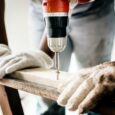Mold can negatively impact your health if you suffer from allergies or a long-term respiratory condition like asthma. Coughing, wheezing, throat, skin, and eye irritation are just some of the health issues that mold may bring, even if you don’t have allergies or a weak immune system. Although you can’t completely restrict your exposure to mold outdoors or in public places, you can check for mold in common areas around your house and take preventative and remediation actions.
Common Areas for Mold Growth
While we can’t always check for the presence of mold, we can figure out ways to prevent them. Mold loves moisture and damp areas. So if there are areas to check, it would be those that tend to give them a place where they can thrive. If you need help, you can get advice from experts on this page.
Bath or Shower
We often see mold in showers and bathtubs. These places often become damp as a result of frequent usage. Mold spores will grow if you don’t properly ventilate your bathroom while you’re taking a shower and after you’ve finished. Check for mold on your shampoo bottles, washcloths, and loofahs. Sometimes, it can also grow in the shower curtain, in and around the faucet and showerhead, and in the tile’s grout.
Kitchen
In your kitchen, you’ll find plenty of places for mold to grow, from long-forgotten food items to piles of dishes in the sink. Mold may quickly grow in the kitchen due to the increased humidity levels caused by running hot water from the sink or using the stove. The pantry, refrigerator, and beneath the sink are some of the most typical areas to look for mold in the kitchen. Check the microwave, stove, and windows for signs of growth too.
Window Sills, Windows, and HVAC Vents
Windows become moist because of humidity, thus, facilitating mold growth. Indoor window sills are a surefire place for mold to grow if any moisture is present, especially if you don’t have the habit of not drying it off regularly. On the other hand, your bedroom or living room may be set at a temperature to give you a decent night’s sleep or rest. As long as you’re running the AC and heating equipment, mold can grow in your vents if you’re not careful.
How to Prevent Mold
There are different ways to prevent mold from growing in your homes. Here are a couple of things you can do.
- Control the humidity. It’s best to maintain the humidity level at or below 60%.
- Quickly dry wet textiles. Surfaces susceptible to mold formation should be cleaned, disinfected, and dried.
- Old pipes need to be replaced. Work on leaks in the roof, walls, and foundation.
- Drain your heating and air conditioning systems on a regular basis.
- Make sure your belongings are completely dry before putting them away for long periods.
- Improve your home’s ventilation. Keep an eye on the ventilation in your basement.
- Open closet doors more often and move furniture away from the walls to improve airflow in cramped rooms.
When you find mold in your property, it is vital to act fast. As tempting as it may be, cleaning mold on your own can harm your health. Exposure to it can cost you treatment costs on top of remediation costs. This is why hiring professionals can help. A professional remediation company like PuroClean of Orlando can give us solutions that are timely and efficient.
The Takeaway
Mold is a significant problem that must be dealt with swiftly and efficiently in every environment. If you’re concerned about mold, keep in mind that it may develop on just about any surface. This includes everything from clothing and carpets to food and pipes. When it comes to cleaning up any spills or water buildup, it’s essential to act quickly.




